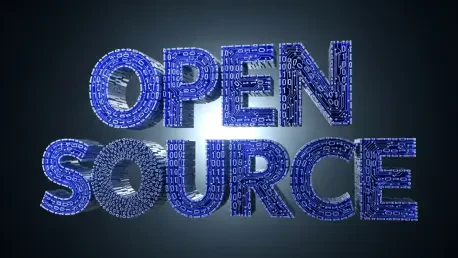Setting the Stage for Open Source Analysis
The open source software market has become a cornerstone of modern technology, powering everything from enterprise systems to startups with tools that promise no upfront cost, yet a startling reality emerges when examining recent disruptions. A major player like Bitnami halting maintenance of popular containers and pulling down Helm charts forced countless organizations to rethink their strategies. This incident alone underscores a critical tension: while open source is marketed as “free,” the underlying expenses can be staggering. Why does this matter? As businesses increasingly rely on these solutions, understanding the true cost of ownership is paramount to navigating risks and ensuring sustainability.
This analysis delves into the evolving landscape of open source software, unpacking the hidden costs that lurk beneath its appealing surface. It aims to provide a comprehensive market perspective by exploring current trends, financial implications, and long-term projections. The focus is on equipping stakeholders—be they developers, business leaders, or security teams—with actionable insights to make informed decisions in a complex ecosystem. Beyond just identifying challenges, this examination seeks to highlight strategic opportunities within the market.
The significance of this topic cannot be overstated as open source continues to dominate software development, influencing budgets and operational frameworks across industries. By shedding light on maintenance burdens, dependency risks, and business continuity threats, this analysis sets the stage for a deeper understanding of what “free” truly means. Expect a detailed breakdown of market dynamics, supported by data and trends, to guide future adoption and risk mitigation strategies.
Market Dynamics: Trends, Data, and Projections in Open Source
Economic Realities: The Shift from Idealism to Financial Sustainability
The open source market has undergone a profound transformation, moving from a community-driven ethos of collaboration to a landscape heavily influenced by economic imperatives. Initially rooted in the idealism of sharing code for collective progress, the sector now sees significant involvement from corporations and foundations. Major tech entities and organizations like the Cloud Native Computing Foundation (CNCF) fund critical projects, ensuring their viability but also tying them to strategic business interests. This shift has redefined market expectations, with financial sustainability often taking precedence over pure goodwill.
Current data paints a telling picture: a significant portion of impactful open source tools is backed by companies seeking returns on investment, whether through premium services or licensing models. Events such as Broadcom’s acquisition of VMware, which led to Bitnami’s withdrawal of free container images, exemplify how corporate strategies can disrupt market stability overnight. This trend suggests that from 2025 to 2027, the market will likely see an increase in hybrid models where open source cores are paired with paid support, balancing accessibility with revenue generation. Such developments signal a maturing market but also highlight the need for vigilance among users.
The implications of this economic focus are far-reaching for businesses relying on open source solutions. As funding sources dictate project longevity, market participants must evaluate not just technical merits but also the financial health of sponsoring entities. This evolving dynamic indicates a future where contributions from users may become a norm, blurring the lines between consumer and maintainer. Understanding these economic underpinnings is crucial for anticipating shifts in availability and support within the open source ecosystem.
Hidden Costs: Maintenance and Operational Challenges
Beyond the surface appeal of cost-free software, the open source market reveals substantial hidden expenses, particularly in maintenance. While downloading code incurs no direct fee, ensuring its security and functionality often falls on the end user, creating a significant operational burden. Research from industry bodies like the Open Source Security Foundation (OpenSSF) reveals that over 80% of projects have fewer than three active maintainers, heightening the risk of neglect or unpatched vulnerabilities. This scarcity of support can lead to costly downtime or the need for in-house expertise, challenging the notion of “free.”
Market trends further illustrate this challenge with incidents like Bitnami’s cessation of container maintenance, which forced organizations to seek alternatives or invest in custom solutions. Such disruptions are not isolated; they reflect a broader pattern where smaller libraries or solo-maintained packages struggle to keep pace with security demands. Projections suggest that as adoption grows, businesses will need to allocate increasing budgets toward maintenance—either through direct contributions to projects or by hiring specialized staff. This cost factor is reshaping how companies assess the value proposition of open source software.
The operational impact on the market is evident as firms grapple with balancing flexibility against reliability. Without proactive investment in upkeep, the risk of unexpected crises looms large, often offsetting initial savings. This reality drives a growing demand for managed open source services, where third-party providers handle maintenance for a fee. As this segment of the market expands, it underscores a critical insight: the true price of open source lies not in acquisition but in ongoing care and resource allocation.
Dependency Risks: Navigating a Complex Supply Chain
Another pivotal trend shaping the open source market is the cascading risk posed by intricate dependency chains. Modern applications often rely on numerous components, each with its own set of dependencies, creating a fragile network vulnerable to single points of failure. A notable example is the Log4j vulnerability crisis, which exposed how an under-maintained library could disrupt entire industries. This incident highlights a persistent market challenge: most organizations lack deep visibility into their supply chains, amplifying exposure to unmaintained or unsupported elements.
Current market analysis indicates a rising awareness of dependency risks, with demand for supply chain visibility tools surging as businesses seek to map and monitor their software stacks. Data suggests that without such tools, firms remain blind to deeper vulnerabilities, risking significant operational setbacks. Projections for the near term point to increased investment in automated scanning and risk assessment solutions, as companies aim to fortify their resilience against dependency-related disruptions. This trend is likely to drive innovation in security-focused software segments.
The broader market implication is a shift toward more strategic adoption practices. Organizations are beginning to prioritize diversified dependencies to avoid over-reliance on single components or vendors. Additionally, there’s a growing interest in minimal, hardened container images that reduce dependency footprints, offering a more secure alternative. As these practices gain traction, they signal a market evolving to address systemic risks, though the associated costs of implementation continue to challenge the perception of open source as a no-cost solution.
Business Continuity: Corporate Strategies and Market Stability
Business continuity emerges as a critical concern within the open source market, particularly when corporate strategies override community needs. Projects tied to a single company or funding source face heightened risks of abrupt changes, as seen with Bitnami’s pivot under Broadcom’s ownership. Similar moves by entities like Elastic, Redis, and HashiCorp to alter licensing or availability reflect a market trend where economic pressures can reshape access overnight, leaving users scrambling for alternatives.
Industry insights emphasize the importance of governance models in stabilizing the market. Projects with diverse backing or robust community oversight are less susceptible to unilateral decisions by a single sponsor. However, market data suggests that many widely used tools remain under the control of individual corporations, creating potential volatility. Forecasts indicate that as economic conditions fluctuate, non-revenue-generating projects may face cuts, prompting a push for community-driven funding models to ensure continuity over the next few years.
This trend has profound implications for market participants, necessitating a reevaluation of dependency on single-vendor solutions. Businesses are increasingly urged to assess the financial stability and strategic goals of project sponsors before adoption. The market may also see a rise in collaborative frameworks that distribute maintenance responsibilities across multiple stakeholders, reducing the risk of disruption. Such developments point to a future where business continuity planning becomes an integral part of open source strategy, further eroding the illusion of cost-free software.
Future Outlook: Innovations and Regulatory Influences
Looking ahead, the open source market is poised for significant evolution as technological innovation and economic realities intersect. Emerging trends include the adoption of hardened, minimal container images that strip out unnecessary dependencies, offering enhanced security and resilience. Standardized frameworks promoted by organizations like CNCF are also gaining traction, aiming to foster interoperability and reduce reliance on single vendors. These advancements suggest a market maturing in its approach to mitigating hidden costs.
Economic and regulatory factors are expected to further shape the landscape. As tech giants face tighter budgets or antitrust scrutiny, non-critical open source initiatives might be deprioritized, potentially destabilizing dependent markets. Conversely, government policies encouraging open source use in public sectors could inject funding and stability into key projects, bolstering market confidence. Analysts predict a growing trend of organizational contributions to critical software, redefining “free” as a shared investment rather than a giveaway over the coming years.
Speculatively, the market may witness an uptick in hybrid models combining open source cores with premium features or support, balancing accessibility with sustainability. This could create new revenue streams while ensuring project longevity, though it risks alienating smaller players if not carefully managed. As these trends unfold, the market will likely prioritize proactive risk management, with businesses investing in strategies to navigate a shifting terrain. The challenge lies in maintaining the open source ethos while addressing the economic imperatives that drive its future.
Reflecting on the Open Source Market Journey
Looking back, the exploration of the open source software market revealed a landscape rife with hidden costs and evolving dynamics. The maintenance burdens, dependency risks, and business continuity challenges underscored that “free” software often carries significant expenses in care and strategic planning. Market trends pointed to a shift from idealism to economic pragmatism, with corporate strategies and funding models playing pivotal roles in shaping stability and access.
The analysis also highlighted emerging innovations like hardened container images and standardized frameworks that aim to address systemic vulnerabilities. Economic and regulatory influences stood out as key drivers that reshape project sustainability, pushing the market toward collaborative and hybrid models. These insights paint a picture of an ecosystem at a crossroads, balancing accessibility with the need for financial viability.
Moving forward, stakeholders are encouraged to adopt a strategic mindset by conducting thorough risk assessments of project sponsors and investing in supply chain visibility tools to map dependency trees. Diversifying dependencies and contributing to critical projects emerge as vital steps to build resilience. Additionally, leveraging managed services or hardened images offers practical ways to mitigate risks. These actionable measures promise to help organizations harness the benefits of open source while safeguarding against its less visible challenges, ensuring a more sustainable engagement with this transformative market.









